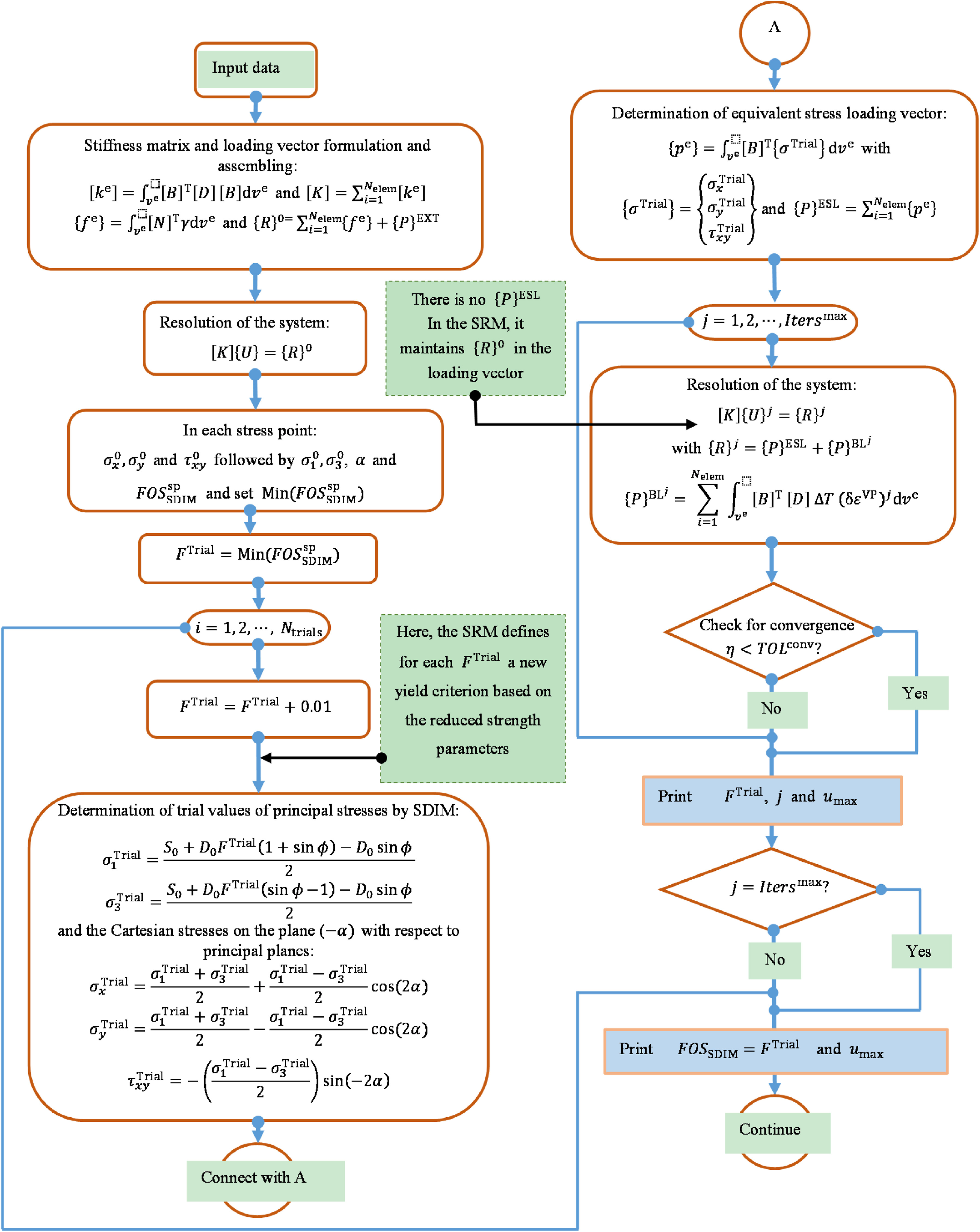JRMGE / Vol 14 / Issue 4
Finite element analysis of slope stability by expanding the mobilized principal stress Mohr's circles – Development, encoding and validation
Djillali Amar Bouzid
Show More
Department of Civil Engineering, Faculty of Technology, University of Blida 1, Blida, 09000, Algeria
2022, 14(4): 1165-1179. doi:10.1016/j.jrmge.2022.01.016
Received: 2021-06-26 / Revised: 2021-12-21 / Accepted: 2022-01-20 / Available online: 2022-05-16
2022, 14(4): 1165-1179.
doi:10.1016/j.jrmge.2022.01.016
Received: 2021-06-26
Revised: 2021-12-21
Accepted: 2022-01-20
Available online: 2022-05-16
In recent years, finite element analysis is increasingly being proposed in slope stability problems as a competitive method to traditional limit equilibrium methods (LEMs) which are known for their inherent deficiencies. However, the application of finite element method (FEM) to slope stability as a strength reduction method (SRM) or as finite element limit analysis (FELA) is not always a success for the drawbacks that characterize both methods. To increase the performance of finite element analysis in this problem, a new approach is proposed in this paper. It consists in gradually expanding the mobilized stress Mohr's circles until the soil failure occurs according to a prescribed non-convergence criterion. The present approach called stress deviator increasing method (SDIM) is considered rigorous for three main reasons. Firstly, it preserves the definition of the factor of safety (FOS) as the ratio of soil shear strength to the mobilized shear stress. Secondly, it maintains the progressive development of shear stress resulting from the increase in the principal stress deviator on the same plane, on which the shear strength takes place. Thirdly, by introducing the concept of equivalent stress loading, the resulting trial stresses are checked against the violation of the actual yield criterion formed with the real strength parameters rather than those reduced by a trial factor. The new numerical procedure was encoded in a Fortran computer code called S4DINA and verified by several examples. Comparisons with other numerical methods such as the SRM, gravity increasing method (GIM) or even FELA by assessing both the FOS and contours of equivalent plastic strains showed promising results.
Keywords: Slope stability, Finite element analysis, Strength reduction method (SRM), Stress point-based factor of safety (FOS), Limit equilibrium method (LEM), Stress deviator, Mohr's circle, Plastic strain
Article Data
Author(s) Information
Djillali Amar Bouzid

Djillali Amar Bouzid received his MSc degree from the National Polytechnic School (NPS) of Algiers in 1997 and his PhD degree from both NPS and the University of Stuttgart (Germany) in 2007. In 2008, He worked as a post-doctoral researcher at the University of Stuttgart on the material point method (MPM) project where he implemented interface elements in MPM code. He is currently a full professor at the Department of Civil Engineering, University of Blida 1 (Algeria) after spending 15 years at the University of Medea, Algeria. He has been involved in geotechnical research, consulting and education for more than 20 years. His research interests include: (1) numerical investigation of laterally loaded monopiles in both sands and clay; (2) development of new p-y curves for large-diameter monopoles supporting offshore wind turbines; (3) numerical analysis of box culverts; (4) dynamic analysis of offshore wind turbines supported by skirted caissons; and (5) development of numerical tools such as stress deviator increasing method (SDIM) for stability of slopes under seismic and water pressure conditions.

